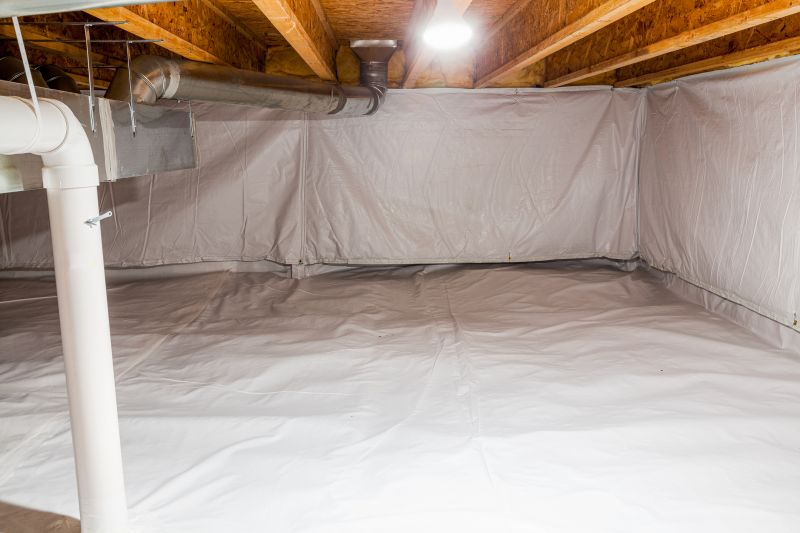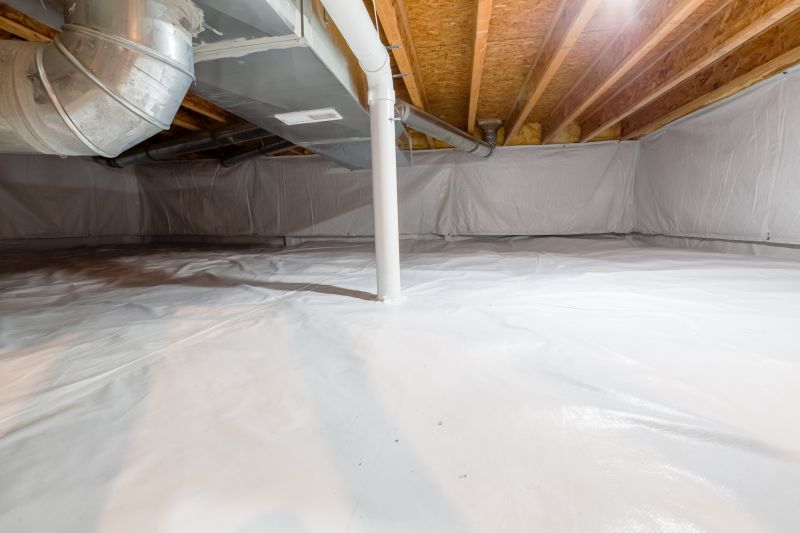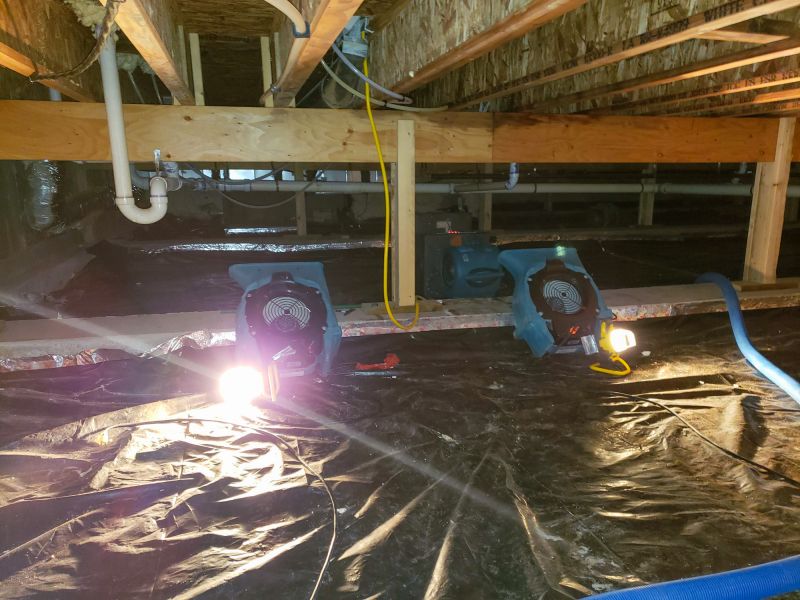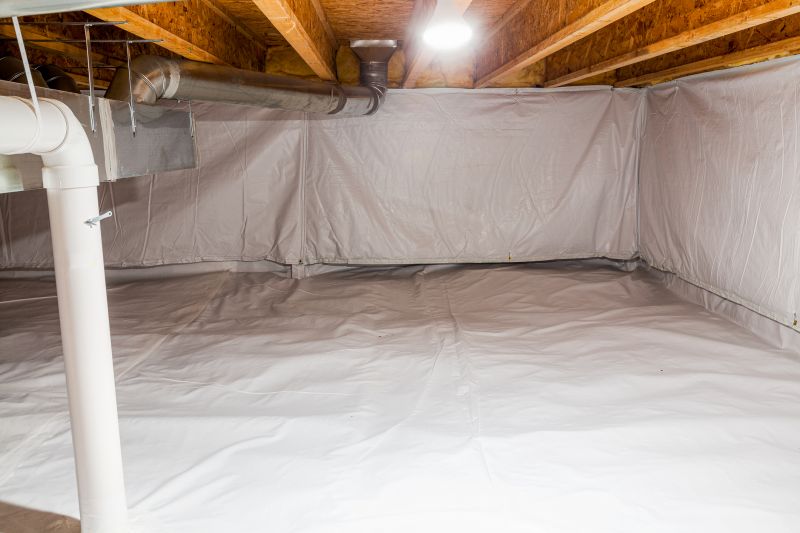Protect Your Home with Expert Crawlspace Sealing
Encapsulation effectively prevents moisture from entering the crawlspace, reducing mold growth and structural damage caused by excess humidity.
Sealing the crawlspace reduces heat loss and drafts, leading to lower energy bills and improved comfort within the home.
Encapsulation minimizes the infiltration of mold spores, dust, and other allergens, promoting healthier indoor air quality.
A sealed crawlspace discourages pests such as rodents and insects from nesting and entering the living areas.

A finished crawlspace showing sealed walls, insulation, and vapor barriers.

An example of insulation and vapor barrier installation in a crawlspace.

Equipment and materials used during the encapsulation process.

Crawlspace with vent covers sealed to prevent moisture entry.
Failure to encapsulate a crawlspace can lead to serious issues, including increased moisture levels that promote mold growth, wood rot, and pest infestations. Studies show that unsealed crawlspaces can contribute to indoor air quality problems, leading to respiratory issues and allergies. Additionally, moisture-related damage can decrease a home's structural integrity and property value over time.
| Benefits of Crawlspace Encapsulation | Risks of Not Encapsulating |
|---|---|
| Reduces mold growth | Increased mold and mildew presence |
| Prevents wood rot | Structural deterioration |
| Improves indoor air quality | Higher allergen levels |
| Decreases energy costs | Higher utility bills |
| Discourages pest entry | Pest infestations |
| Enhances home comfort | Drafts and temperature fluctuations |
| Protects property value | Decreased home value |
| Controls humidity levels | Excess moisture and humidity |
Investing in crawlspace encapsulation can provide long-term benefits by protecting the property from moisture-related issues and improving indoor air quality. Proper sealing and insulation are essential steps in maintaining a healthy, energy-efficient home environment.




